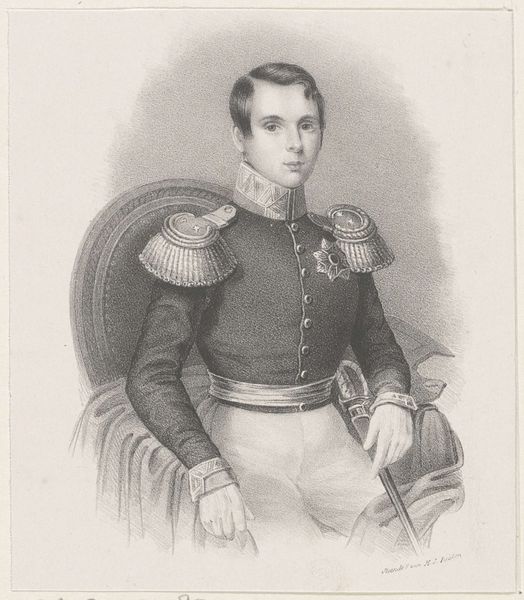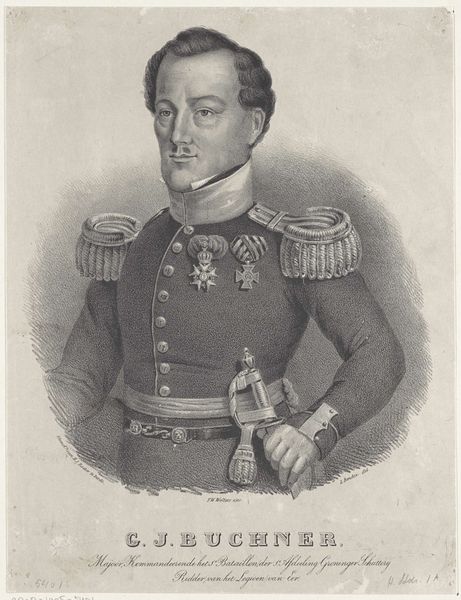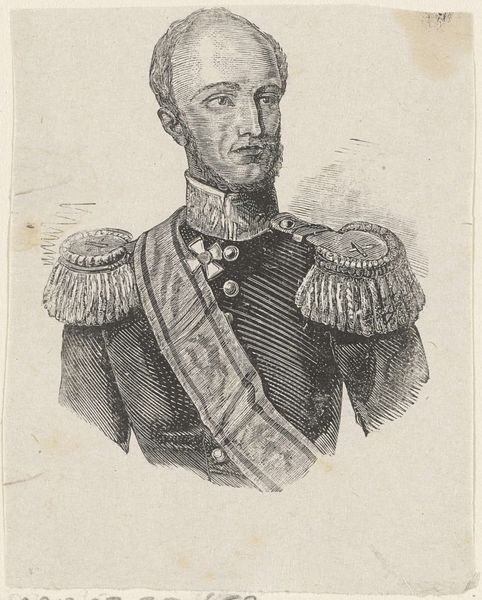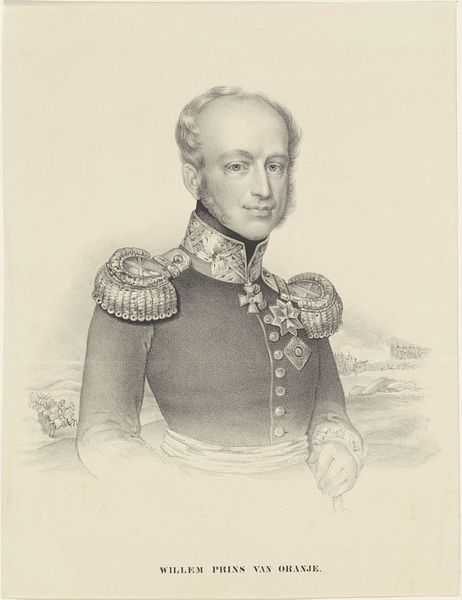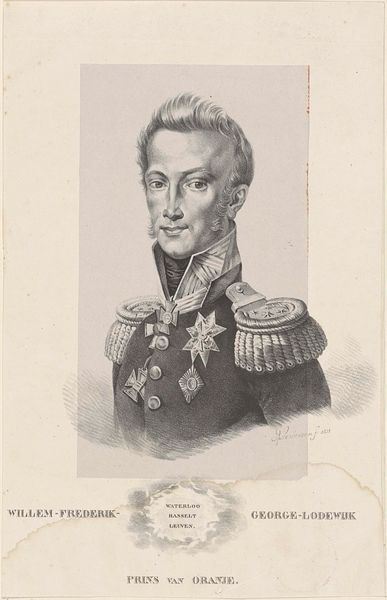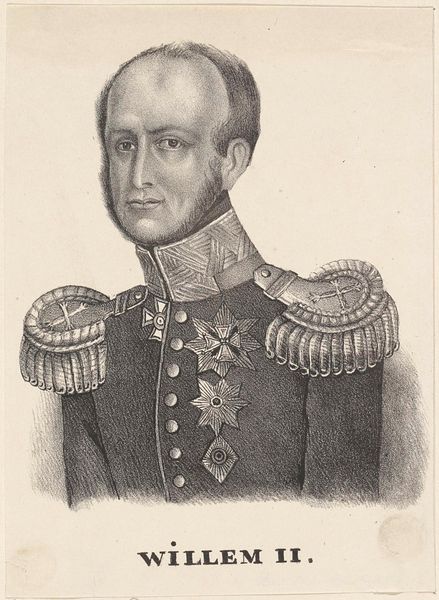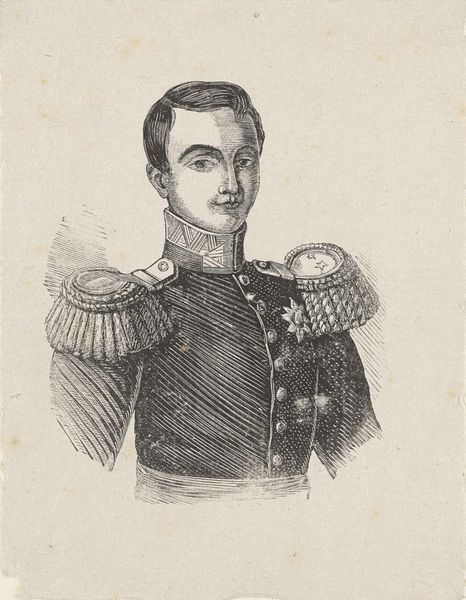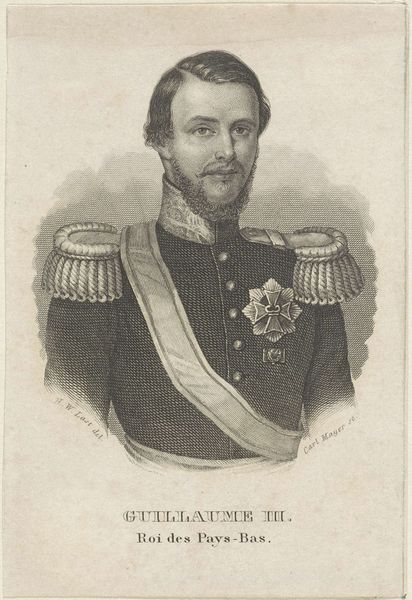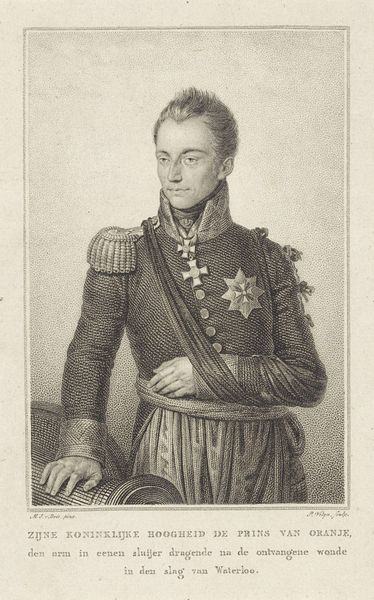
drawing, paper, ink, pencil
#
portrait
#
pencil drawn
#
drawing
#
old engraving style
#
paper
#
ink
#
pencil drawing
#
pencil
#
19th century
#
academic-art
#
realism
Dimensions: height 282 mm, width 205 mm
Copyright: Rijks Museum: Open Domain
Curator: Here we have an interesting drawing, attributed to an anonymous artist and created sometime between 1835 and 1899: a "Portret van Willem III, koning der Nederlanden," or "Portrait of William III, King of the Netherlands." It's rendered in pencil and ink on paper. Editor: It strikes me immediately as both formal and a bit unsettling. There’s something almost mannequin-like about the sitter, especially around the eyes. All those buttons…he’s buttoned up in every way. Curator: Indeed. He’s literally and figuratively armored. Consider the rigid pose, the formality of his attire, and the way the light catches those epaulettes; it's a display of power meant to project authority during a period of significant social upheaval. The uniform itself speaks volumes about the militaristic values upheld by the monarchy. Editor: Yes, those visual cues are overt. The epaulettes, the high collar... symbols of rank and control. It reminds me of how portraits were strategically employed to reinforce narratives of imperial might during the 19th century, especially amongst monarchs facing challenges to their power. The engraver captures every braid with sharp precision. It is meticulous. Curator: Exactly! This portrait isn’t simply about representation; it's about reinforcing social hierarchy. William's image had to perform, had to embody the very essence of kingship in an age increasingly critical of inherited privilege. Think of the revolutions that swept Europe during this period. Representational art was weaponized by dominant structures. Editor: It also evokes a certain nostalgia. Looking at this, I feel a strong link to the visual language of 19th-century power—how leaders wished to be perceived and remembered. Beyond the individual, the portrait is a cultural artifact revealing persistent notions of leadership. It uses portraiture to establish, even insist upon, enduring authority. Curator: Well put. And while the artist remains unknown to us, they certainly understood the assignment. What seems like a simple portrait holds a microcosm of political and social tension. Editor: A king carefully presented and preserved on paper, carrying symbolic weight far beyond his likeness. The artist used graphic language to assert political positions during times of revolution.
Comments
No comments
Be the first to comment and join the conversation on the ultimate creative platform.
